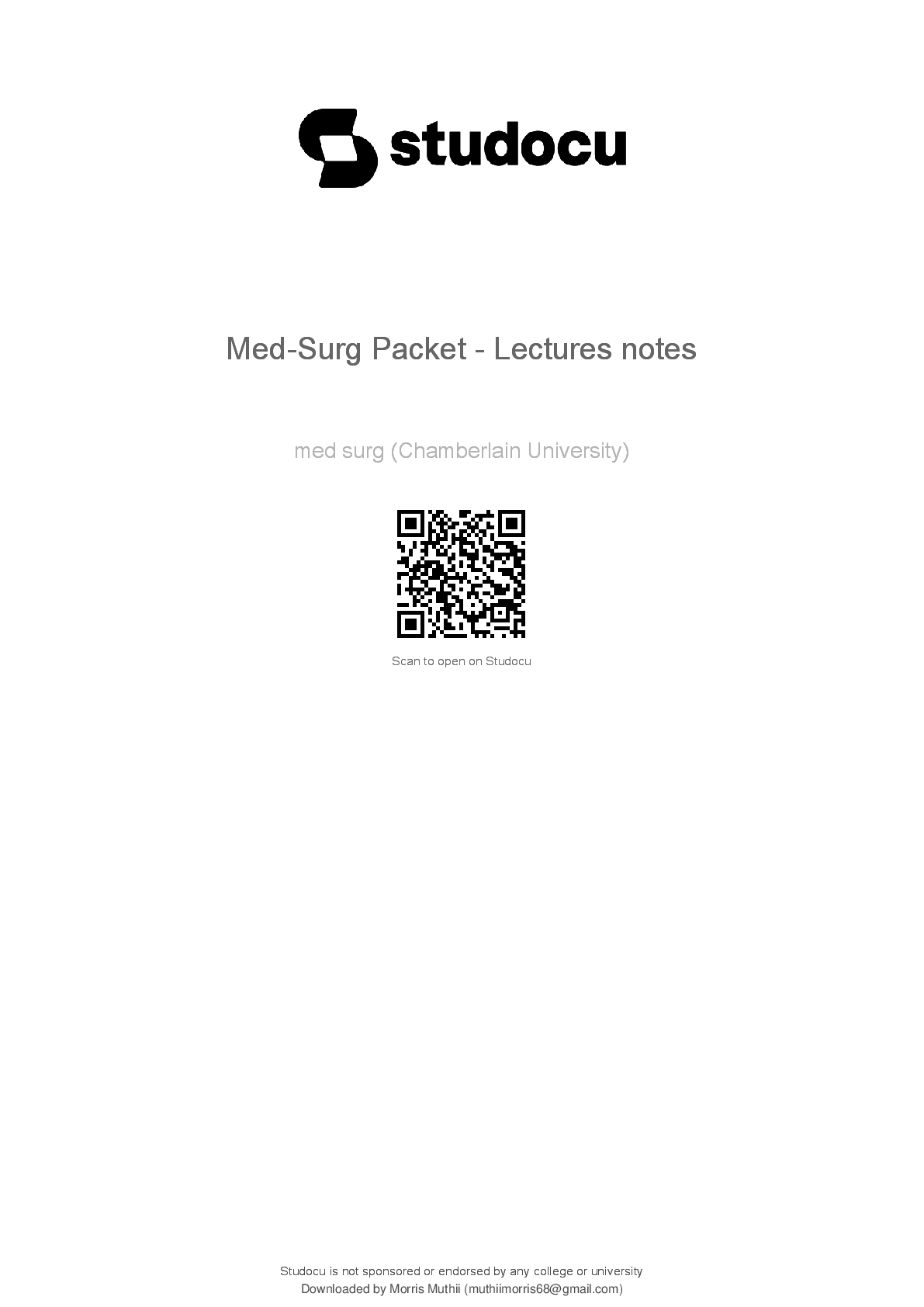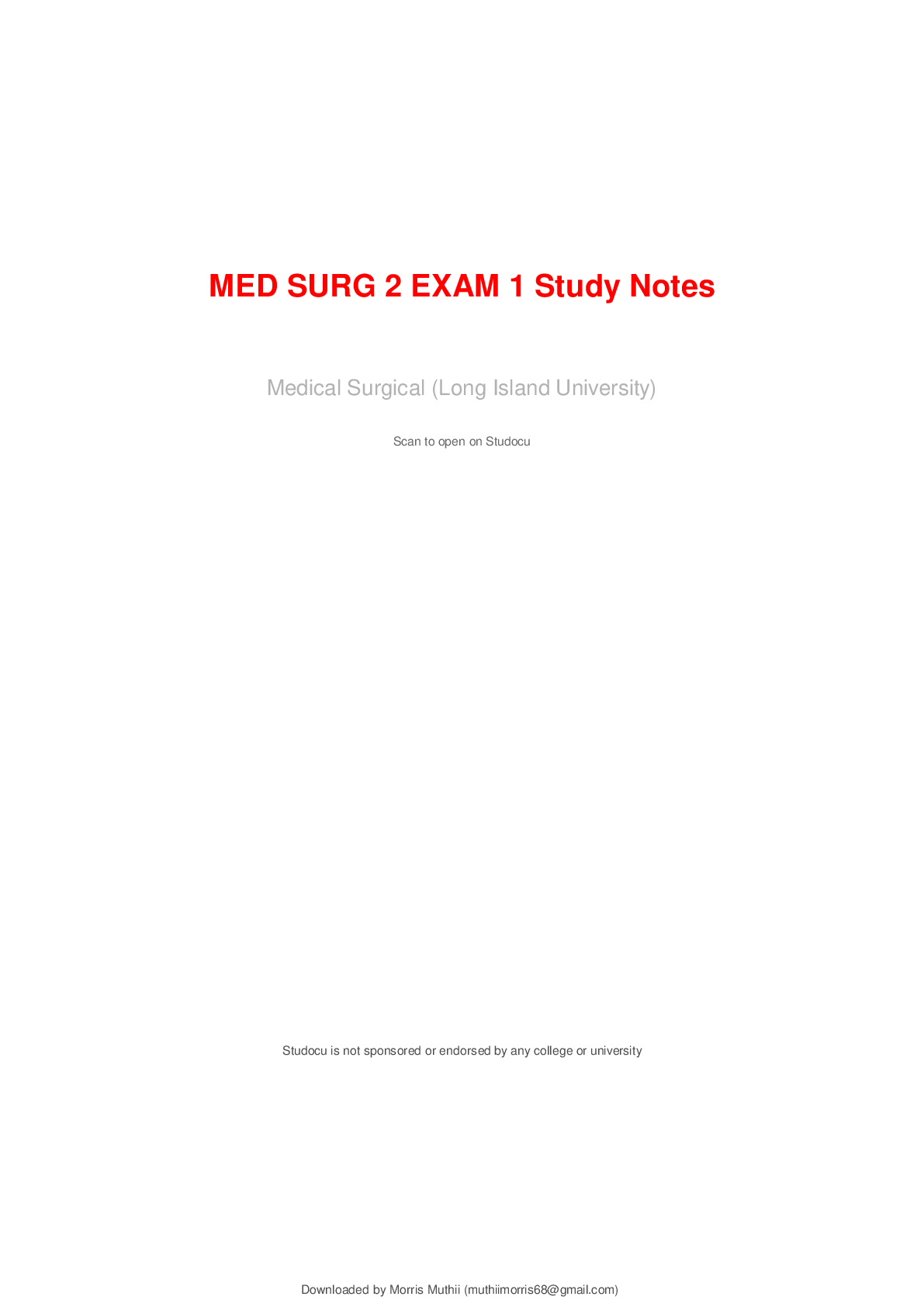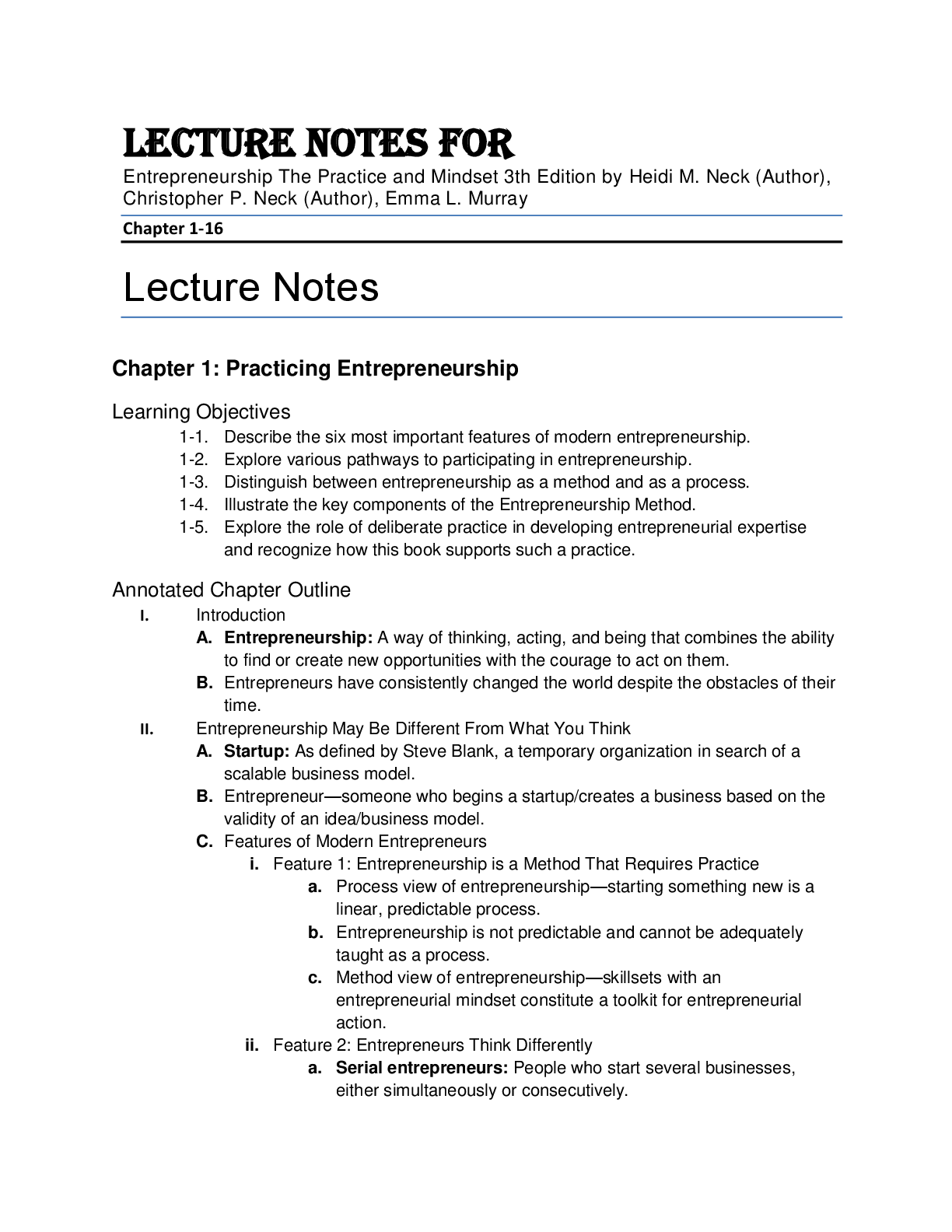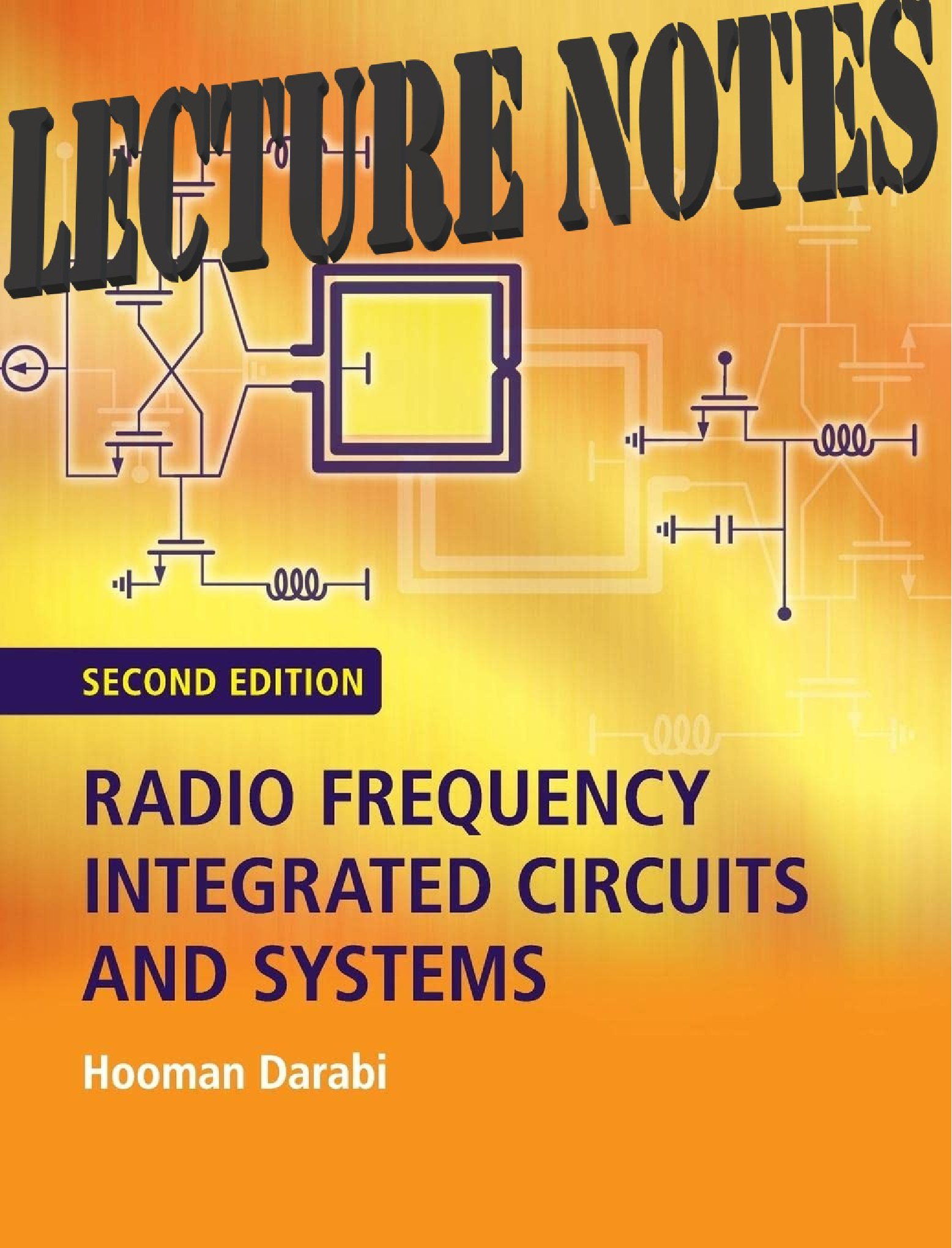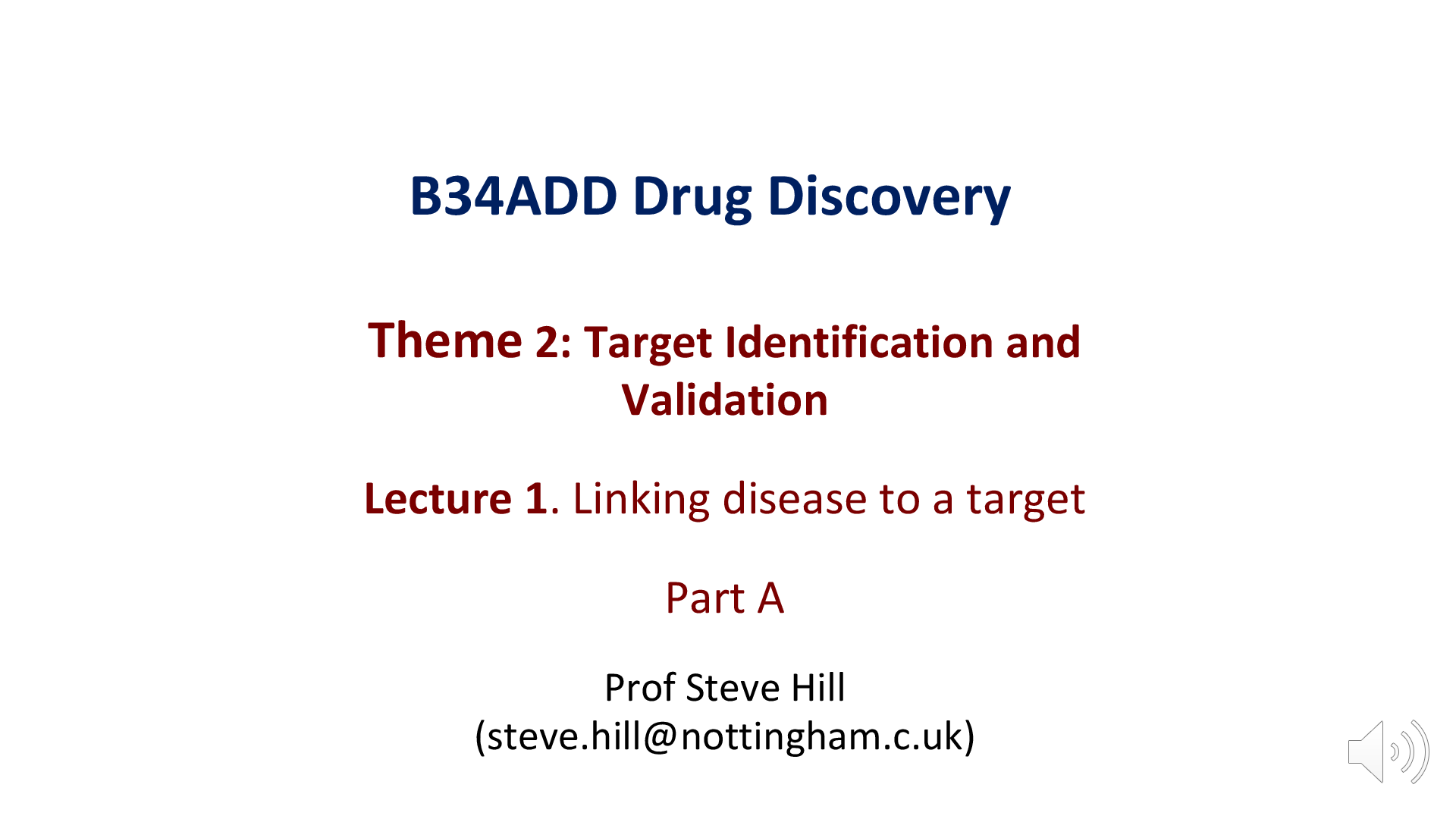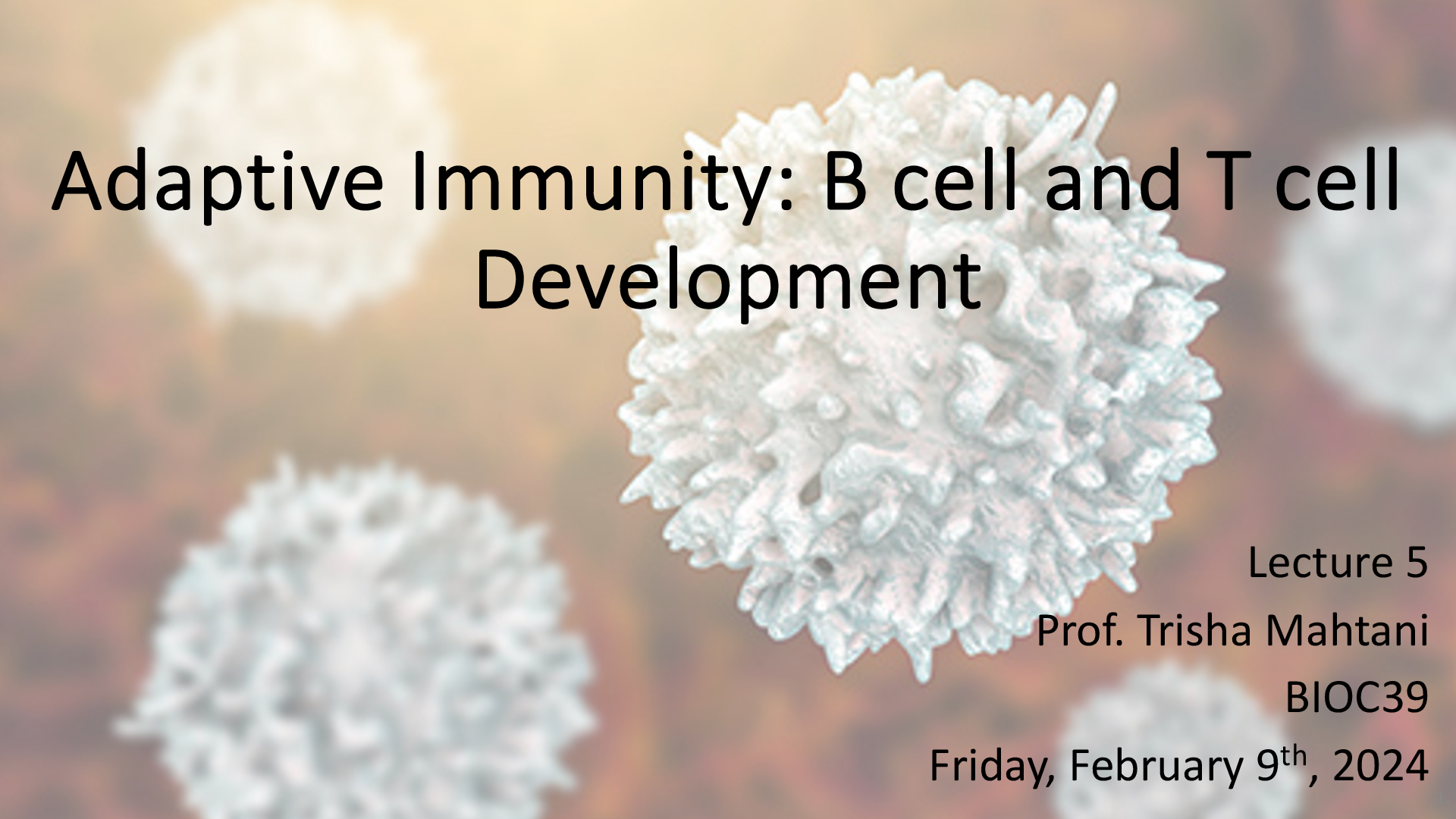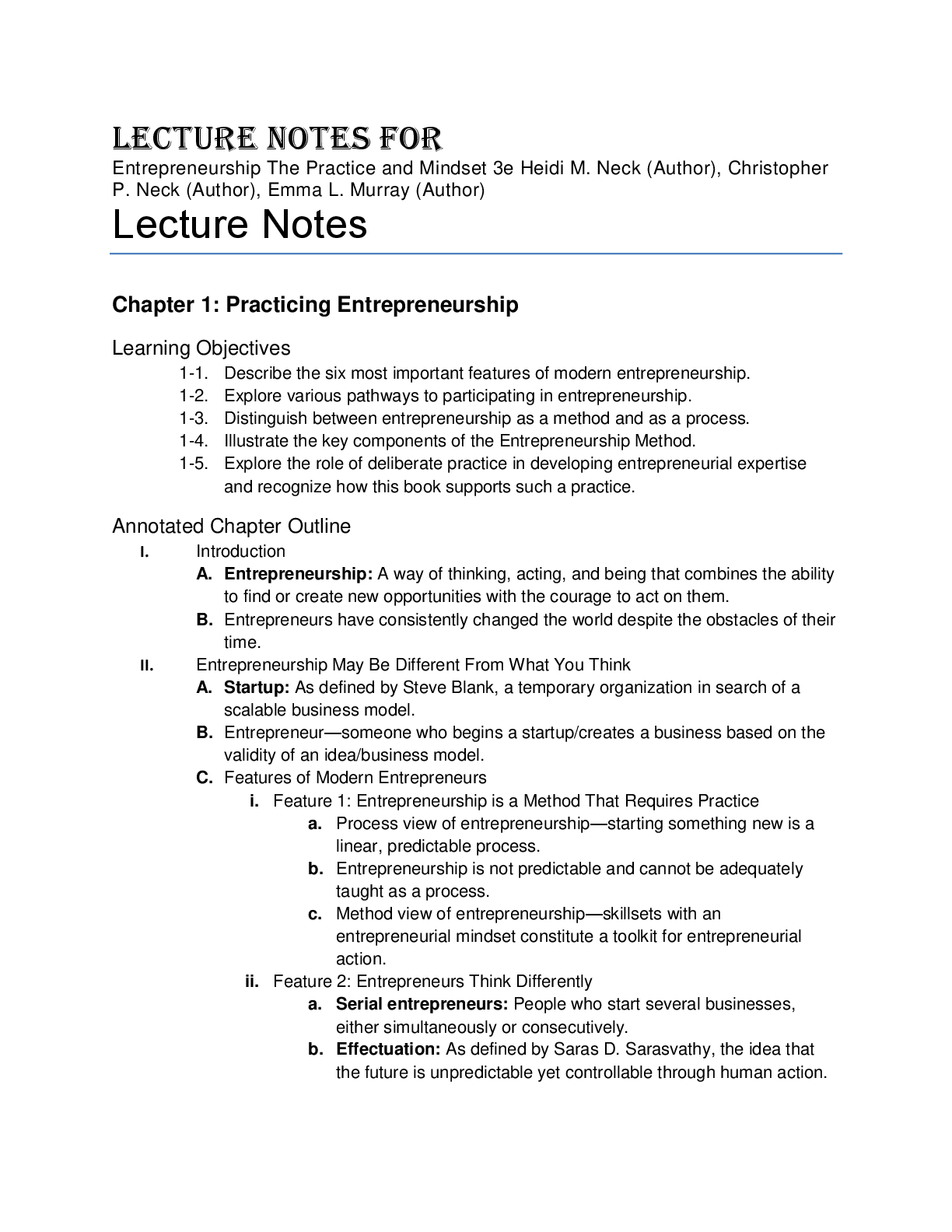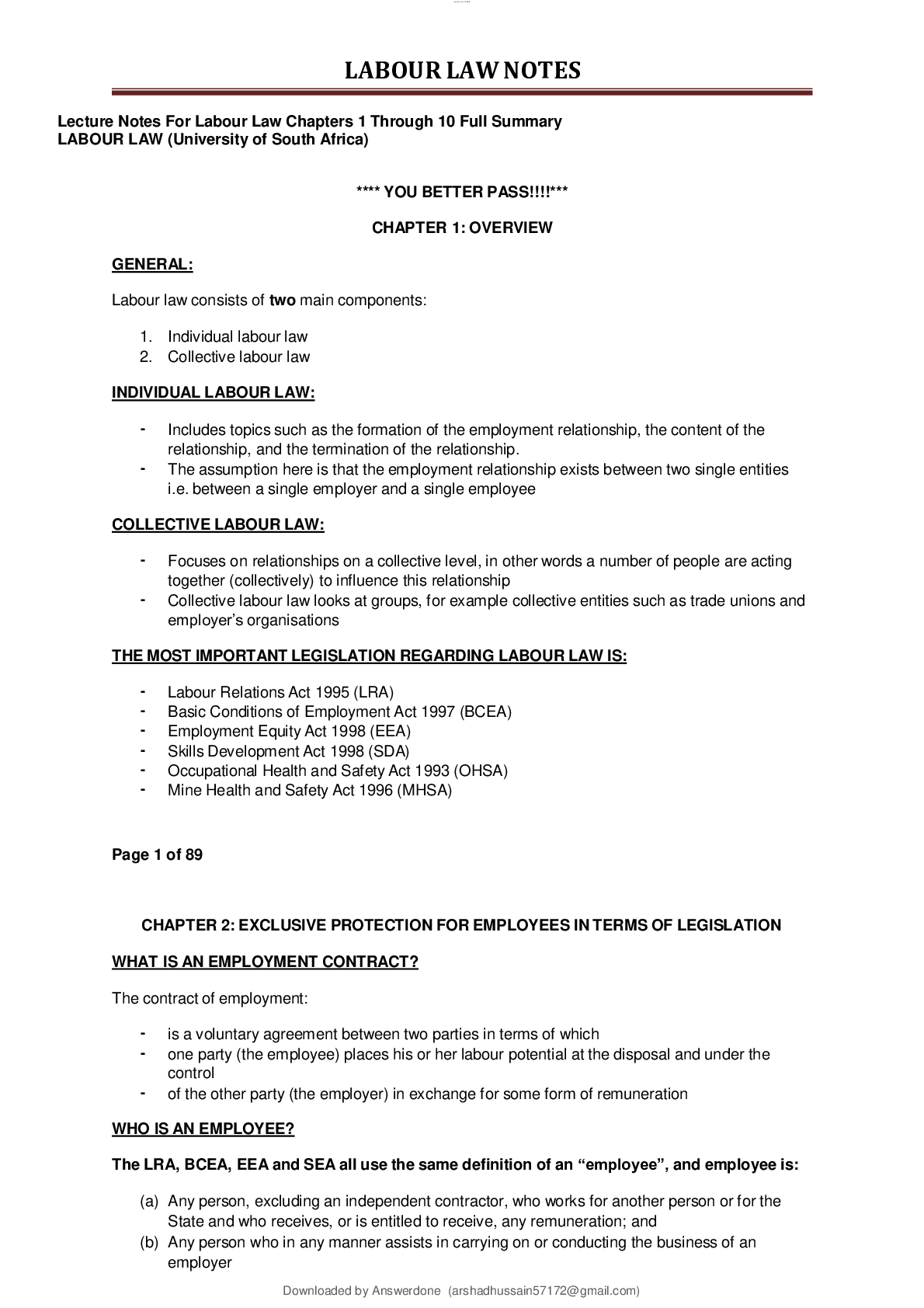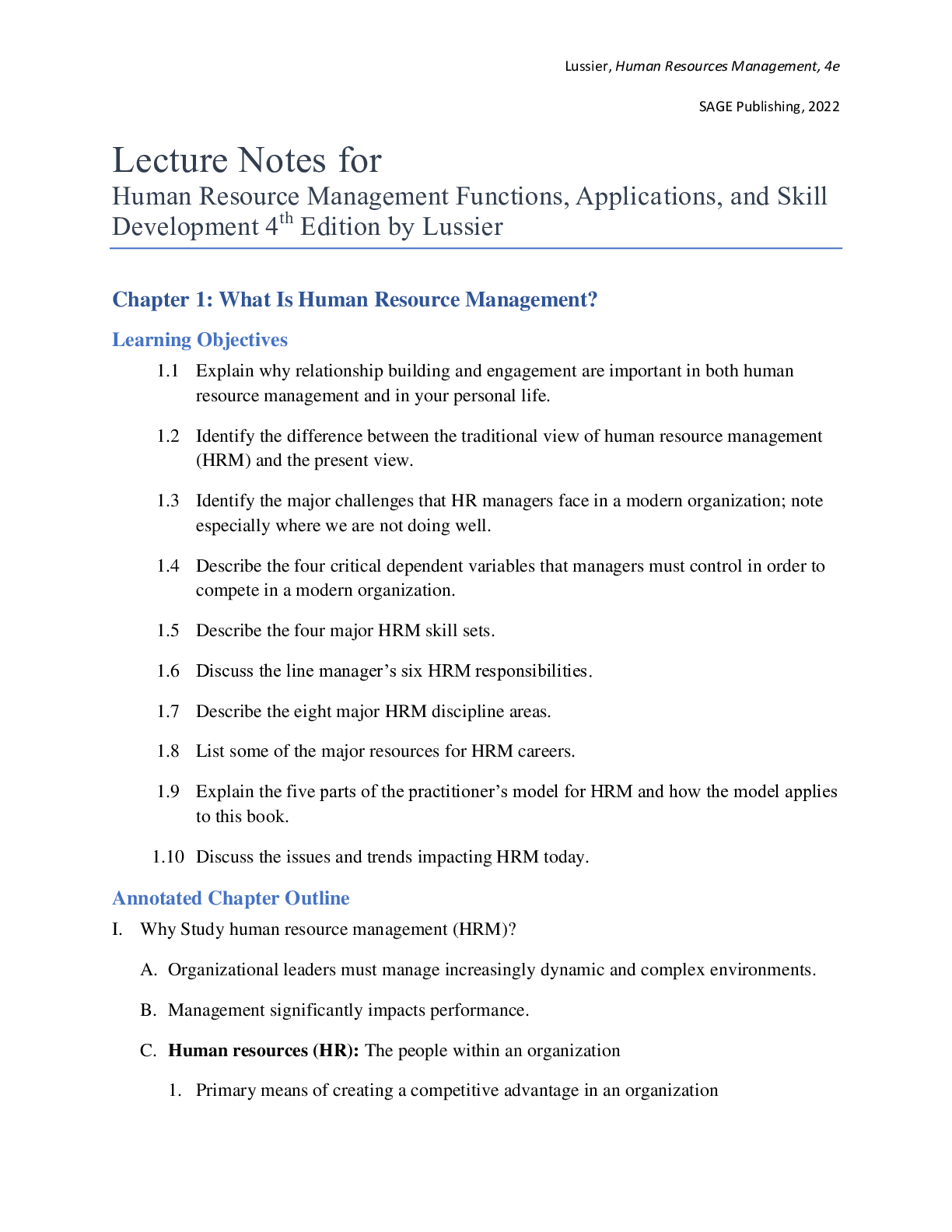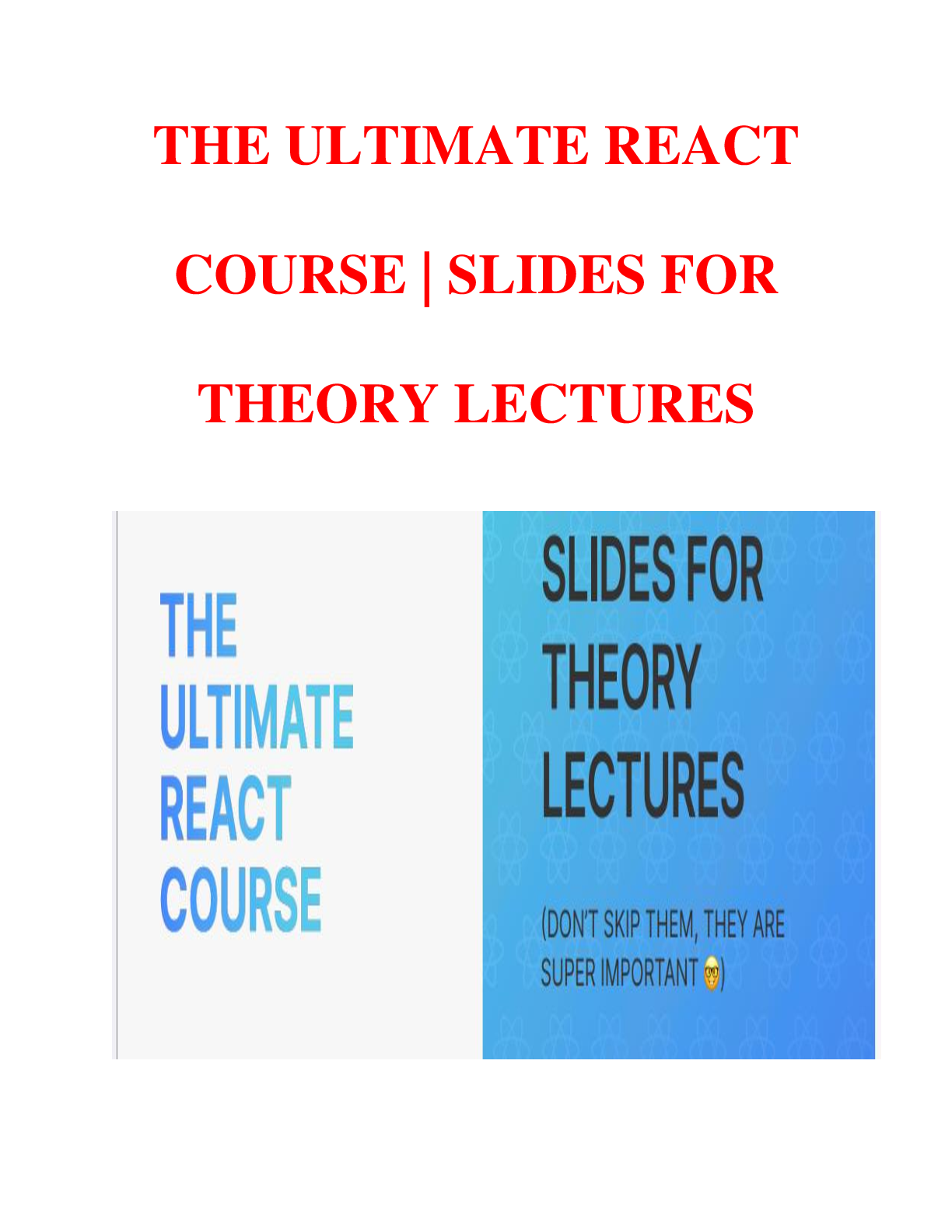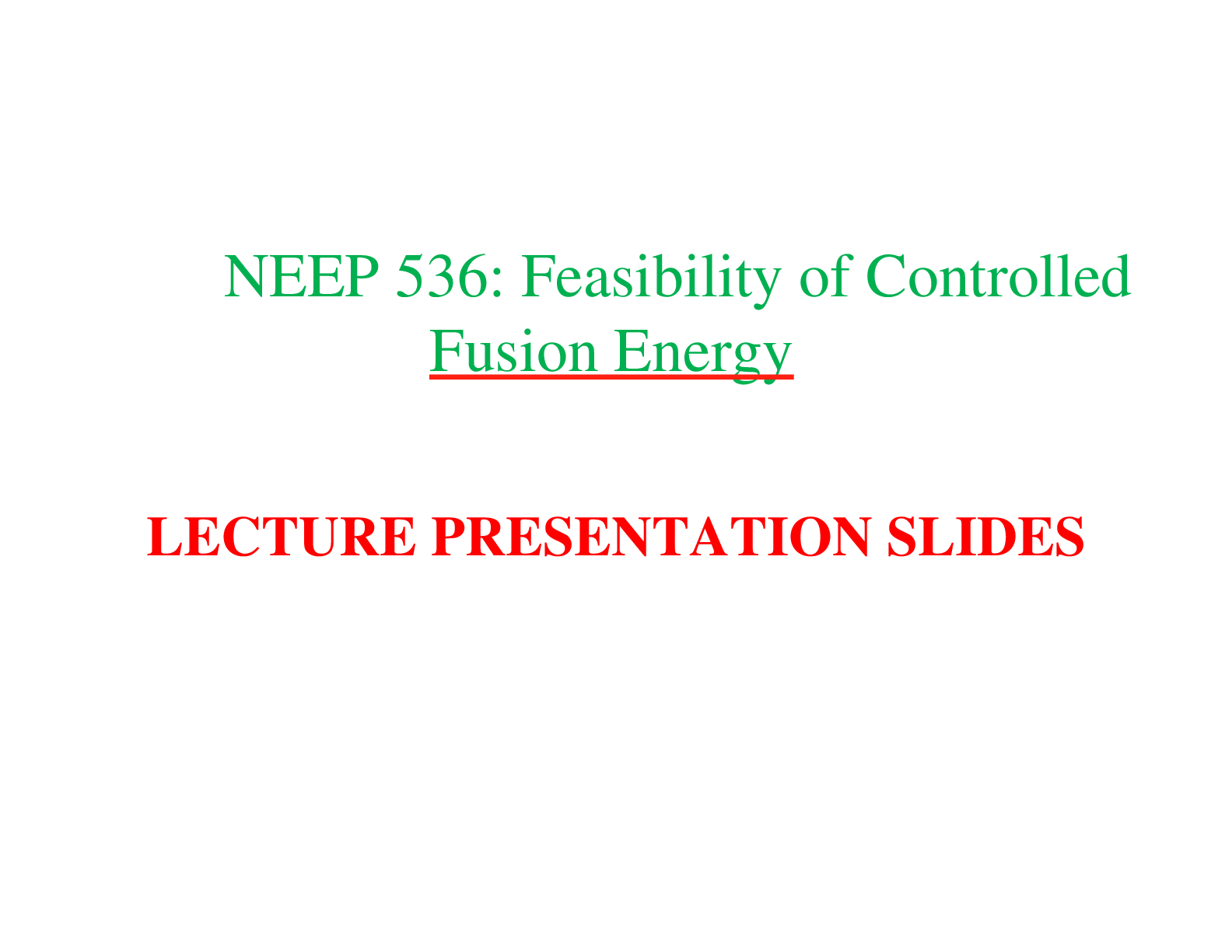Neuroscience > LECTURE SLIDES/NOTES > Neuroscience Lecture Notes 2025/2026 VERIFIED & APPROVED (All)
Neuroscience Lecture Notes 2025/2026 VERIFIED & APPROVED
Document Content and Description Below
Neuroscience Table of Contents INTRODUCTION TO NEUROSCIENCE ................................................................................................................................. ... 3 LEARNING GOALS ................................................................................................................................................................................................................ 3 INTRODUCTION .................................................................................................................................................................................................................... 3 ORIGINS OF NEUROSCIENCE .............................................................................................................................................................................................. 3 NEURONS AND NEUROANATOMY .................................................................................................................................................................................... 3 THE PROTOTYPICAL NEURON ............................................................................................................................................................................................ 4 GLIA ....................................................................................................................................................................................................................................... 6 THE NERVOUS SYSTEM ...................................................................................................................................................................................................... 6 THE BRAIN ........................................................................................................................................................................................................................... 7 MENINGES ........................................................................................................................................................................................................................... 8 VENTRICULAR SYSTEM AND CEREBROSPINAL FLUID ....................................................................................................................................................... 9 BLOOD-BRAIN BARRIER (BBB) .............................................................................................................................................. 10 CORTICAL AREAS .............................................................................................................................................................................................................. 10 DIENCEPHALON (FOREBRAIN) ................................................................................................................................................ 11 MESENCEPHALON (MIDBRAIN) ............................................................................................................................................... 11 RHOMBENCEPHALON (HINDBRAIN) ......................................................................................................................................... 12 THE LIMBIC SYSTEM ........................................................................................................................................................................................................ 12 THE SPINAL CORD ............................................................................................................................................................................................................ 13 CRANIAL NERVES.............................................................................................................................................................................................................. 13 THE CONNECTOME .......................................................................................................................................................................................................... 14 RESTING MEMBRANE POTENTIAL (RMP) PT1 .......................................................................................................................... 15 PASSIVE AND ACTIVE TRANSPORT ................................................................................................................................................................................. 16 RESTING MEMBRANE POTENTIAL (RMP) PT2 .......................................................................................................................... 17 POLARISATION .................................................................................................................................................................................................................. 18 SIGNAL INITIATION ........................................................................................................................................................................................................... 18 SYNAPTIC TRANSMISSION AND NEUROTRANSMITTER SYSTEMS ................................................................................. 21 FEATURES OF THE NERVOUS SYSTEM ............................................................................................................................................................................ 21 NEURONAL ACTIVITY ....................................................................................................................................................................................................... 21 SYNAPSES AND JUNCTIONS ............................................................................................................................................................................................. 22 USE AND TRANSMISSION OF CHEMICAL MESSENGERS .............................................................................................................................................. 24 NEUROTRANSMITTERS..................................................................................................................................................................................................... 27 NEUROTRANSMITTERS AND NEURONS: DALE’S PRINCIPLE ........................................................................................................................................ 27 NEUROTRANSMITTER RECEPTORS .................................................................................................................................................................................. 27 CONVERGENCE AND DIVERGENCE .................................................................................................................................................................................. 28 BRAIN RHYTHMS, EPILEPSY AND SLEEP ......................................................................................................................... 29 MEMORY SYSTEMS AND LEARNING ............................................................................................................................... 29 Q&A VIA ZOOM ............................................................................................................................................................................................................... 29 It might be said Downloaded by Morris Muthii ([email protected]) It might be said Introduction to Neuroscience Learning Goals ▪ Describe some origins and the evolution of neuroscience throughout history and its various aspects ▪ Discuss neural cells including the neuron and glial cells and their basic functions ▪ Explain the neural structures that may be involved in diseases such as Alzheimer disease Introduction Neuroscience is the study of the structure and function of the brain and nervous system. It ranges from cellular and molecular biology to gross anatomy, physiology, disease states, behaviour and even cognition. The brain governs various aspects of human nature and functions such as curiosity, pain and mood. Origins of Neuroscience Modern neuroscience took some time to achieve. For a large part of history nations would practice trepanation (a skull surgery involving the formation of a whole in the skull of a living person; it is believed it is done to treat health problems such as head injuries). Phrenology: was created by Gall in the 18th century. Phrenology are the bumps on the surface of skull reflect brain surface and related personality traits (correlating structure of head to personality). Franz Joseph Gall proposed that personality traits such as secretiveness, generosity & destructiveness related to dimensions of the head. They thought the more we used a section, the bigger it will get and the less we used a section, the smaller it will get. This theory was not popular for long, since he had no proof. In the 19th century, we recognised 4 major insights: 1. Nerves acted as wires to conduct electricity (nervous system can generate electricity) 2. Different parts of brain perform specific functions e.g. speech, sight etc… 3. Evolution of the nervous system 4. The Neuron: the basic functional unit of communication Downloaded by Morris Muthii ([email protected]) It might be said Neurons and Neuroanatomy The most abundant and important cells in the brain are glia and neurons. ▪ Glia (most abundant cells in the brain, almost half of brain cells) insulates, support and nourish the neurons; ▪ Neurons are nerve cells that transmit signals via electro-chemical changes in their membrane thus they detect and respond to stimuli and send and receive signals. Most CNS neurons lack a centriole and therefore cannot divide. Consequently, this is why neurons that are lost to injury or disease are seldom replaced. Another thing to note is that unlike other central nervous system cells which lack the ability to divide, glial cells retain this ability and can divide well into adult life. Unfortunately, this can have dangerous outcomes as glial cells and their precursors can give rise to aggressive brain tumours such as glioblastoma multiforme. The continued division of glial cells can also interfere with the brains ability to repair itself. When neural tissue in the brain or spinal cord is damaged glial cells (mainly microglia) flood the affected area to mop up cellular debris; this leaves behind scar tissue which seals off the area and subsequently interferes with the regrowth of axons. The Prototypical Neuron A neuron has a cytoskeleton made up of: ▪ Microtubules ▪ Microfilaments ▪ Neurofilaments When the cytoskeleton is compromised or disrupted you get a loss of neuronal functioning and in turn a loss of brain functioning which is the basis for neurodegenerative disease (such as Alzheimer’s disease which is the most common form of dementia—60-70% of cases). In Alzheimer’s disease, the tangle formation in the cerebral cortex is caused by the hyperphosphorylation of tau proteins (proteins that ensure microtubules are straight). Tau proteins detach from microtubules and this causes the axons to whither and tangle as the microtubule is no longer able to say tough and straight; this results in disrupted communication throughout the central nervous system affecting cognitive functioning. Through this example, we notice that disruptions in certain components of the neuron can affect basic functioning. Downloaded by Morris Muthii ([email protected]) It might be said Other important components: 1. The Axon The elongated portion that conducts a signal along the length of the neuron 2. The Axon terminal Axon terminal transmits signals to the next neuron 3. Dendrites Dendrites detect signals sent or received from other neighbouring neurons. Another easy way to remember dendrite is as finger like projections. When a signal is transmitted it travels from: Dendrites Axon Axon Terminal Synapse ▪ Pre-synaptic neuron: Delivers the message ▪ Post-synaptic neuron: Receives the message 4. The Synapse In the diagram, we see the synapse of the pre-synaptic neuron and the dendrites of the post-synaptic neuron. When we talk about synaptic transmission, we're talking about sending signals from one neuron to the next via a synapse. Signals undergo this transformation: Electrical chemical electrical i. When the signal travels to a neuron—the signal is electrical ii. iii. When it passes from neuron to the next—the signal is chemical i.e. neurotransmitters that diffuse across the gap between the neurons. Thus, signal transmission is chemical. Signal travels through another neuron—the signal is electrical [Show More]
Last updated: 9 months ago
Preview 5 out of 33 pages

Loading document previews ...
Buy this document to get the full access instantly
Instant Download Access after purchase
Buy NowInstant download
We Accept:

Reviews( 0 )
$21.00
Can't find what you want? Try our AI powered Search
Document information
Connected school, study & course
About the document
Uploaded On
Mar 19, 2025
Number of pages
33
Written in
All
Additional information
This document has been written for:
Uploaded
Mar 19, 2025
Downloads
0
Views
45

